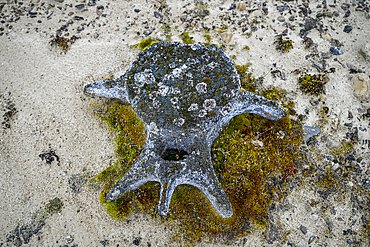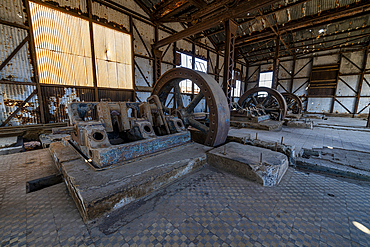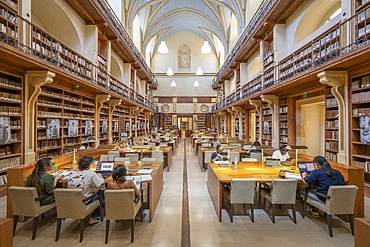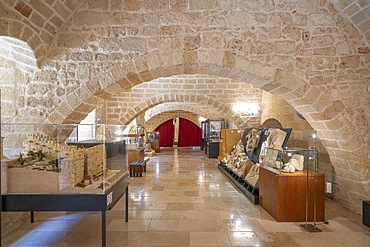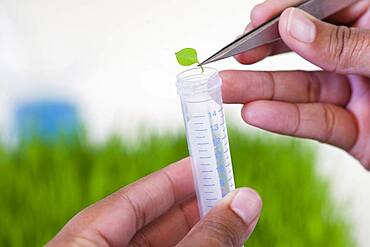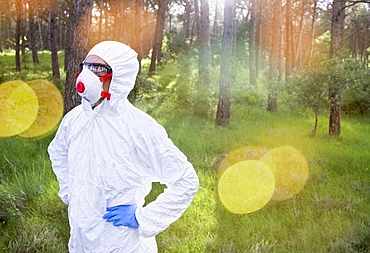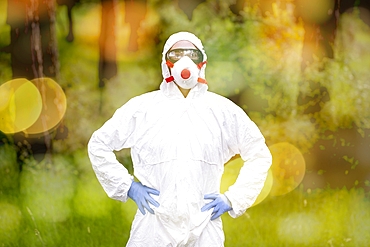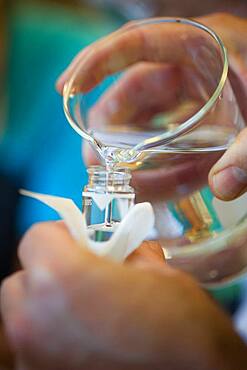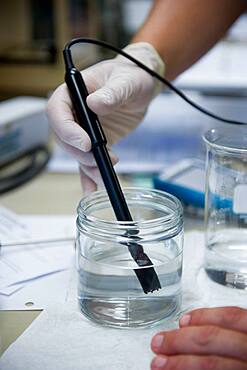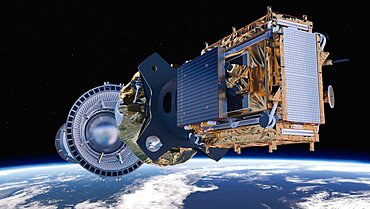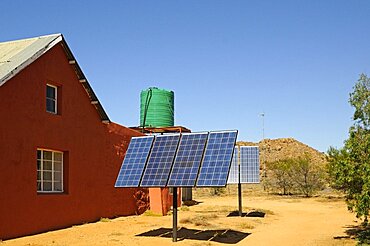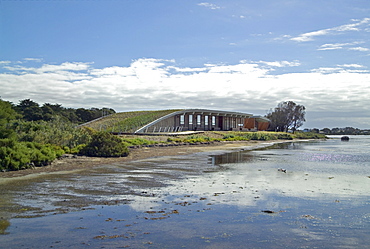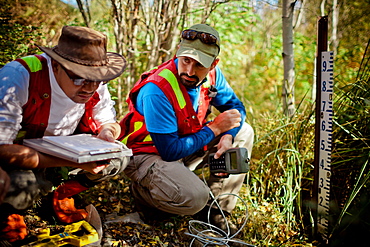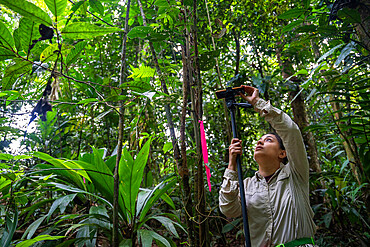Results
« Previous 1 2 3
209 results found
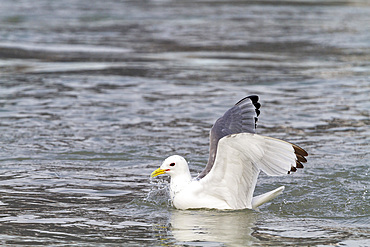
Adult black-legged kittiwakes (Rissa tridactyla) feeding at the base of a glacier in the Svalbard Archipelago, Norway, Arctic, Europe
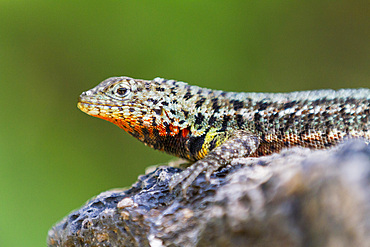
Lava lizard (Microlophus spp) in the Galapagos Islands Archipelago, UNESCO World Heritage Site, Ecuador, South America
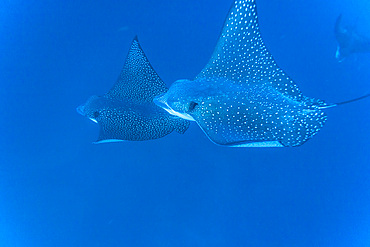
Spotted eagle rays (Aetobatus narinari) underwater at Leon Dormido Island off San Cristobal Island, Galapagos, UNESCO World Heritage Site, Ecuador, South America
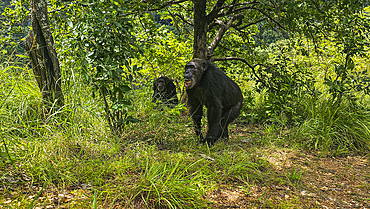
Chimpanzee (Pan troglodytes), Gombe Stream National Park, Lake Tanganyika, Tanzania, East Africa, Africa
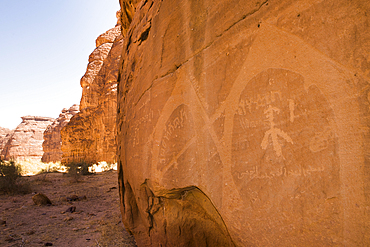
Ancient symbols and rock carvings on a sandstone rock cliff in the Sharaan Nature Reserve, AlUla, Medina Province, Saudi Arabia
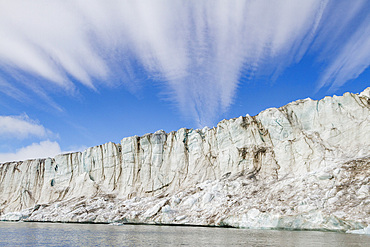
Views of the Vasilievbreen (Vasiliev Glacier), in Isbukta (Ice Bay) near the island of Spitsbergen in Svalbard, Norway, Arctic, Europe
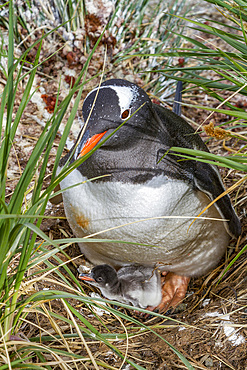
Adult gentoo penguin (Pygoscelis papua) with minutes-old newly hatched chick at Gold Harbor on South Georgia
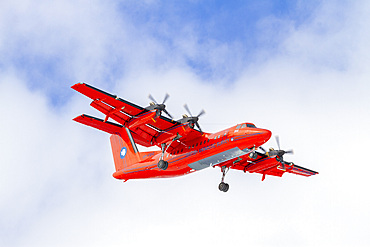
British Antarctic Survey (BAS) research plane landing at the Chilean Research base Frei on King George Island, Antarctica, Polar Regions
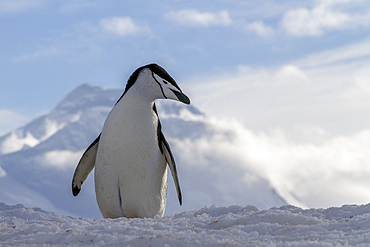
Adult chinstrap penguin (Pygoscelis antarctica), at breeding colony at Half Moon Island, Antarctica, Polar Regions
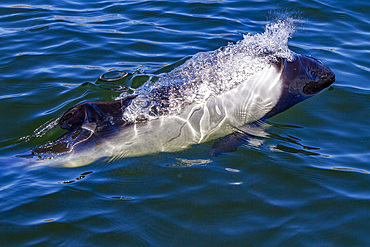
Adult Commerson's dolphin (Cephalorhynchus commersonii), surfacing in Stanley Harbor in the Falkland Islands, South America
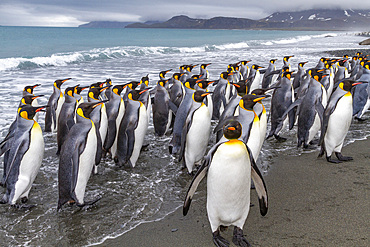
Adult king penguins (Aptenodytes patagonicus) returning from sea to the nesting colony at Salisbury Plain, South Georgia, Polar Regions
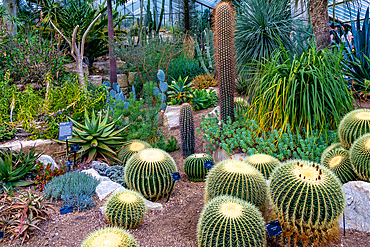
Lush cactus garden with a variety of succulents and desert plants of diverse shapes and textures at Kew Gardens, London, England, United Kingdom, Europe
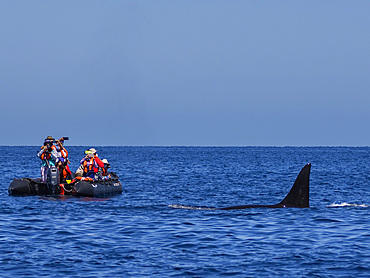
Killer whale pod (Orcinus orca), beside tourists in inflatables off Punta Colorada, Isla San Jose, Baja California Sur, Mexico, North America
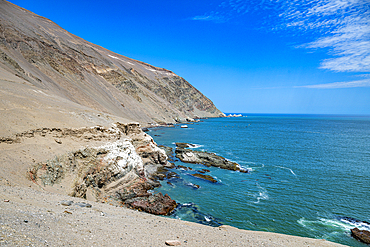
Coastline and recovery place of the Chinchorro Mummies, UNESCO World Heritage Site, Camarones Valley, northern Atacama desert, Chile, South America

Gonchigjaviin tsedendash is incharge of mongolian forest research foundation. with a mandate to reforest areas effected by environmental mining degradation
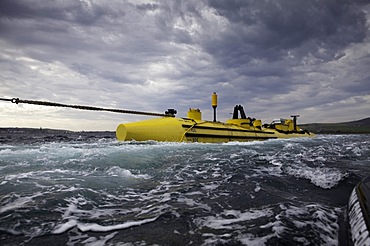
Orkney Islands Sept 2011 Wave and Tidal Power shoot - out testing with the Scotrenewables machine off Kirwall - Scotrenewables Tidal Power Ltd is a renewable energy research and development business based in the Orkney Islands.

Orkney Islands Sept 2011 Wave and Tidal Power shoot - out testing with the Scotrenewables machine off Kirwall - Scotrenewables Tidal Power Ltd is a renewable energy research and development business based in the Orkney Islands.
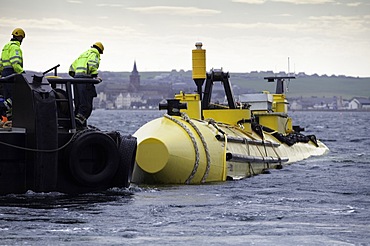
Orkney Islands Sept 2011 Wave and Tidal Power shoot - out testing with the Scotrenewables machine off Kirwall - Scotrenewables Tidal Power Ltd is a renewable energy research and development business based in the Orkney Islands.
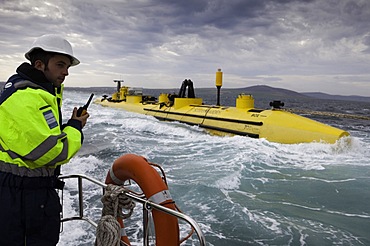
Orkney Islands Sept 2011 Wave and Tidal Power shoot - out testing with the Scotrenewables machine off Kirwall - Scotrenewables Tidal Power Ltd is a renewable energy research and development business based in the Orkney Islands.
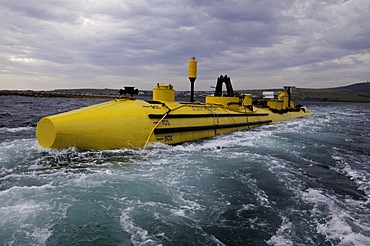
Orkney Islands Sept 2011 Wave and Tidal Power shoot - out testing with the Scotrenewables machine off Kirwall - Scotrenewables Tidal Power Ltd is a renewable energy research and development business based in the Orkney Islands.
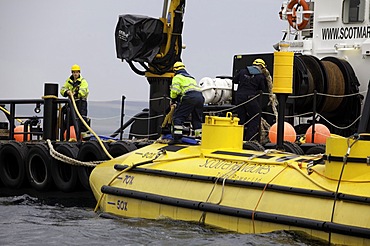
Orkney Islands Sept 2011 Wave and Tidal Power shoot - out testing with the Scotrenewables machine off Kirwall - Scotrenewables Tidal Power Ltd is a renewable energy research and development business based in the Orkney Islands.
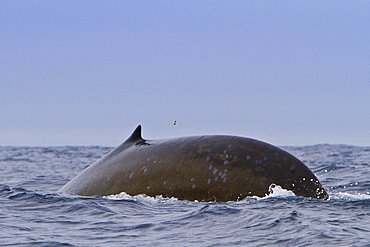
Researcher Stephanie Martin takes a blubber biopsy using an arrow fired from a crossbow of an adult blue whale (Balaenoptera musculus), South Orkney islands, Antarctica, Southern Ocean

Crab preying on dead portuguese man-of-war, Physalia physalis, Praia do Forte, Bahia, Brazil (South Atlantic)
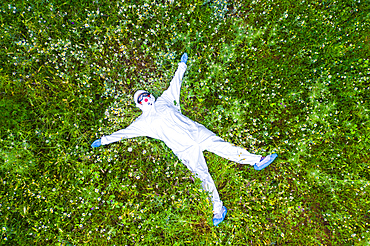
Person with a safety suit lying down in a flowers carpet in a forest area. Ayegui, Navarre, Spain, Europe
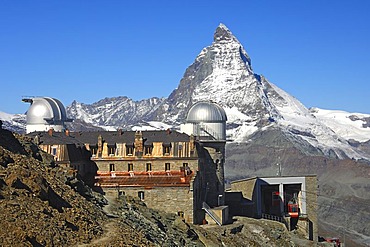
Kulmhotel, High Altitude Research Station KOSMA and TIRGO Observatory, Gornergrat, Matterhorn, Mount Cervin, Zermatt Valais Switzerland
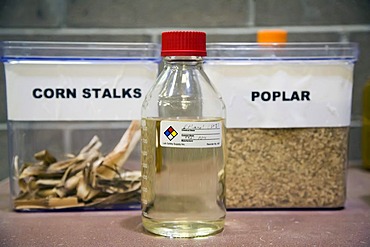
A bottle of ethanol and some of the materials ethanol can be made of at the National Renewable Energy Laboratory, operated by the US Department of Energy, where scientists are developing economical processes for making cellulosic ethanol from non-edible p
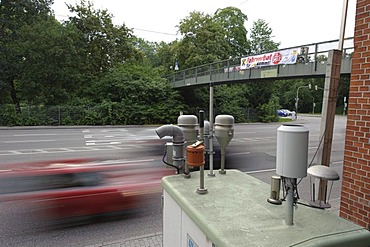
Particulate matter monitoring station, spot station, at Neckartor, B14, Cannstatter Strasse street, the highest PM levels nationwide are regularly measured in downtown Stuttgart, Baden-Wuerttemberg, Germany, Europe

Chempark Dormagen with steaming chimneys in the morning light, production, research and services companies, chemical industry, Cologne, Rhineland, North Rhine-Westphalia, Germany, Europe
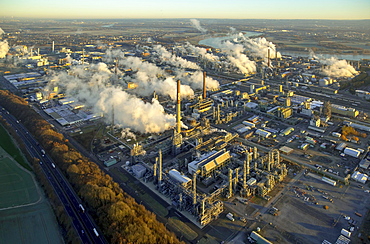
Chempark Dormagen with steaming chimneys in the morning light, production, research and services companies, chemical industry, Cologne, Rhineland, North Rhine-Westphalia, Germany, Europe

Icebergs collect at the end of Lago Grey, below the sweeping tongue of the glacier in Torres del Paine National Park.
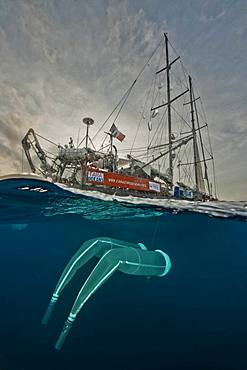
Tara Oceans Expeditions - May 2011. Tara with deployed plancton nets. On "station", the boat is drifting without engine or sails. Tara Oceans, a unique expedition: Tara Oceans is the very first attempt to make a global study of marine plankton, a form of sea life that includes organisms as small as viruses and bacterias, and as big as medusas. Our goal is to better understand planktonic ecosystems by exploring the countless species, learning about interactions among them and with their environment. Marine plankton is the only ecosystem that is almost continuous over the surface of the Earth. Studying plankton is like taking the pulse of our planet. Recently, scientists have discovered the great importance of plankton for the climate: populations of plankton are affected very rapidly by variations in climate. But in turn they can influence the climate by modifying the absorption of carbon. In a context of rapid physico-chemical changes, for example the acidification observed today in the world's oceans, it is urgent to understand and predict the evolution of these particular ecosystems. Finally, plankton is an astonishing way of going back in time ? a prime source of fossils. Over the eons, plankton has created several hundred meters of sediment on the ocean floors. This allows us to go back in time, to the first oceans on Earth, and better understand the history of our biosphere. More than 12 fields of research are involved in the project, which will bring together an international team of oceanographers, ecologists, biologists, geneticists, and physicists from prestigious laboratories headed by Eric Karsenti of the European Molecular Biology Laboratory. Galapagos
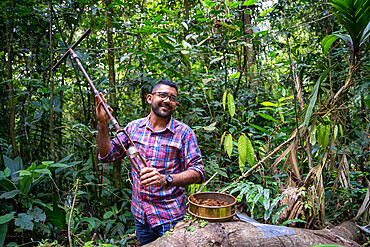
Research assistant working on nitrogen exchanges between bacteria and the roots of legumes in the tropical forest of the "La Selva" research station in Puerto Viejo de Sarapiqui, Costa Rica
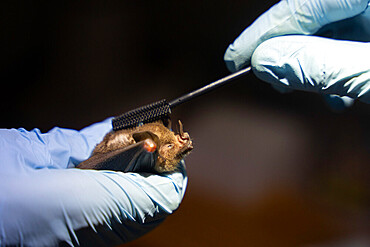
Researchers applying a mascara brush to the hairs of a Sowell's short-tailed bat (Carollia sowelli) to test methods to capture pollen that bats may carry as part of a pollination study, rainforest at the "La Selva" research station in Puerto Viejo de Sarapiqui, Costa Rica
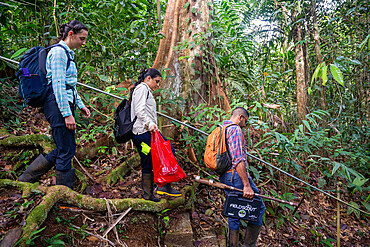
Researchers walking through the rainforest at the "La Selva" research station in Puerto Viejo de Sarapiqui, Costa Rica
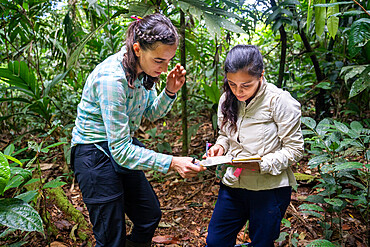
27-year-old researcher and her team working on nitrogen exchange between bacteria and the roots of legumes in the rainforest at the "La Selva" research station in Puerto Viejo de Sarapiqui, Costa Rica
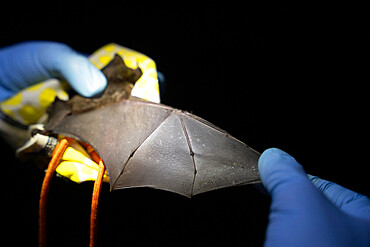
Sowell's short-tailed bat (Carollia sowelli) caught as part of a pollination study, rainforest at the "La Selva" research station in Puerto Viejo de Sarapiqui, Costa Rica
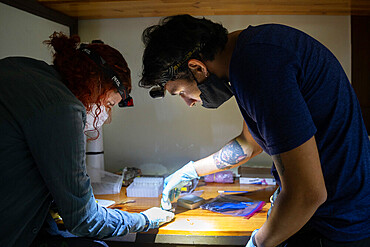
Researchers applying tape to the hairs of a bat to test methods to capture the pollen it carries as part of a pollination study, rainforest at the 'La Selva' research station in Puerto Viejo de Sarapiqui, Costa Rica
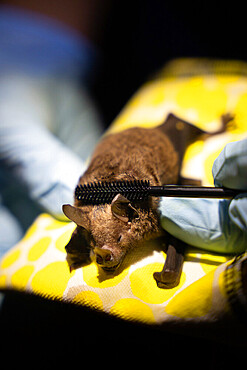
Researchers applying a mascara brush to the hairs of a Sowell's short-tailed bat (Carollia sowelli) to test methods to capture pollen that bats may carry as part of a pollination study, rainforest at the "La Selva" research station in Puerto Viejo de Sarapiqui, Costa Rica
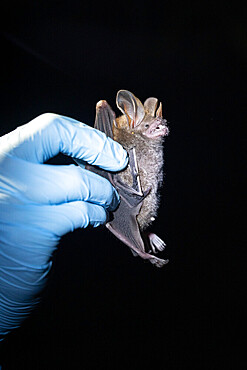
Fringe-lipped Bat (Trachops cirrhosus) in the hand of a scientist as part of a pollination study, tropical forest at the "La Selva" research station in Puerto Viejo de Sarapiqui, Costa Rica
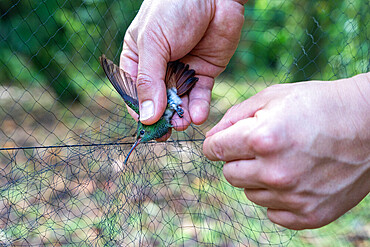
Researcher catching Rufous-tailed Hummingbird (Amazilia Tzacatl) in a net set up for pollination study, rainforest at "La Selva" research station in Puerto Viejo de Sarapiqui, Costa Rica
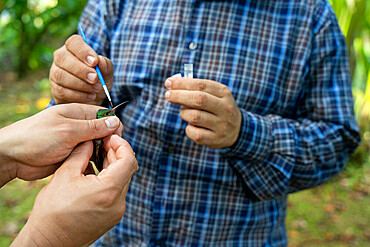
Researchers picking up pollen with a brush from the beak of a Rufous-tailed hummingbird as part of a pollination study, rainforest at the "La Selva" research station in Puerto Viejo de Sarapiqui , Costa Rica
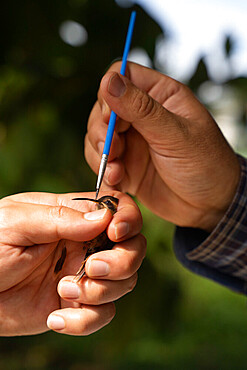
Researchers picking up pollen with a brush from the beak of a hummingbird Stripe-throated Hermit as part of a pollination study, rainforest at the "La Selva" research station in Puerto Viejo de Sarapiqui, Costa Rica
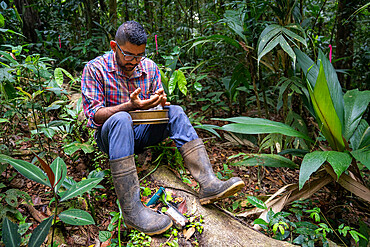
Research assistant working on nitrogen exchanges between bacteria and the roots of legumes in the tropical forest of the "La Selva" research station in Puerto Viejo de Sarapiqui, Costa Rica
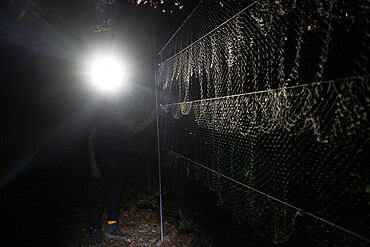
Net for catching bats as part of a pollination study, rainforest at the "La Selva" research station in Puerto Viejo de Sarapiqui, Costa Rica
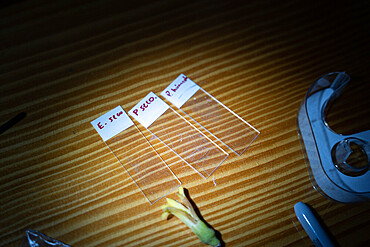
3 microscope slides to analyze pollen transported on bat hairs, "La Selva" research station in Puerto Viejo de Sarapiqui, Costa Rica
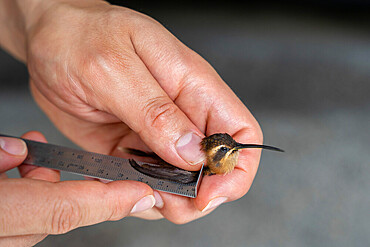
Researcher measuring a 2.6 gram Stripe-throated Hermit hummingbird wing as part of a pollination study, rainforest at the "La Selva" research station in Puerto Viejo de Sarapiqui, Costa Rica

Researcher photographing a 2.6 gram Stripe-throated Hermit hummingbird as part of a pollination study, rainforest at the "La Selva" research station in Puerto Viejo de Sarapiqui, Costa Rica

Camp inselberg, scientific station in the Nouragues nature reserve. Carbet storage on the Nouragues station, where all researchers can store their research equipment - Regina, French Guiana.
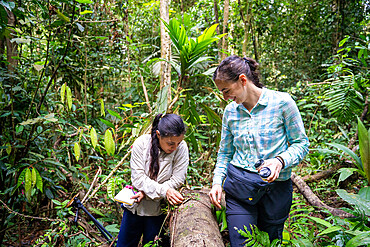
27-year-old researcher working on nitrogen exchange between bacteria and the roots of legumes in the rainforest at the "La Selva" research station in Puerto Viejo de Sarapiqui, Costa Rica
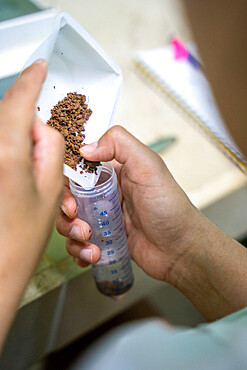
Earth diluted with water in order to extract the PH from the soil as part of a study on nitrogen exchanges between bacteria and the roots of legumes in the tropical forest of the "La Selva" research station in Puerto Viejo from Sarapiqui, Costa Rica
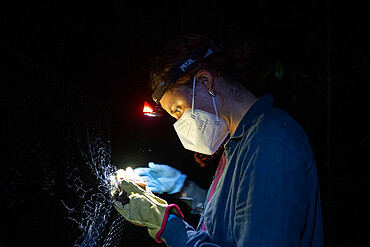
Researcher unhooking a bat caught in a net as part of a pollination study, rainforest at the "La Selva" research station in Puerto Viejo de Sarapiqui, Costa Rica
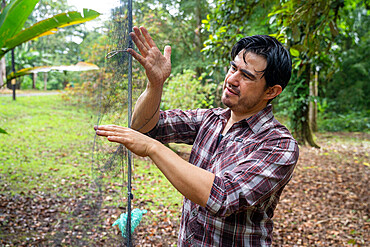
Researcher setting up a net to capture hummingbirds as part of a pollination study, rainforest at the "La Selva" research station in Puerto Viejo de Sarapiqui, Costa Rica
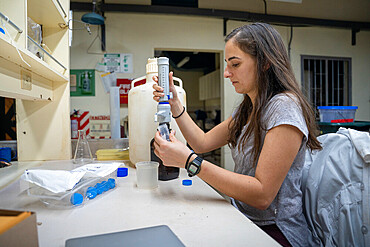
27-year-old researcher working in a lab on nitrogen exchange between bacteria and the roots of legumes in the rainforest at the "La Selva" research station in Puerto Viejo de Sarapiqui, Costa Rica
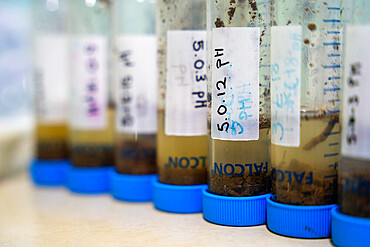
Earth diluted with water in order to extract the PH from the soil as part of a study on nitrogen exchanges between bacteria and the roots of legumes in the tropical forest of the "La Selva" research station in Puerto Viejo from Sarapiqui, Costa Rica
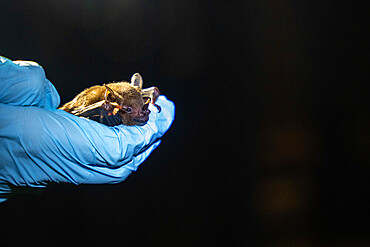
Sowell's short-tailed bat (Carollia sowelli) caught as part of a pollination study, rainforest at the "La Selva" research station in Puerto Viejo de Sarapiqui, Costa Rica
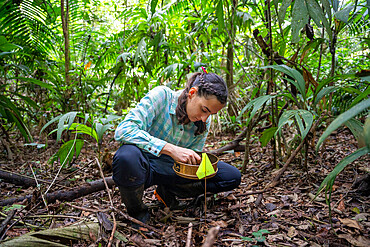
27-year-old researcher working on nitrogen exchange between bacteria and the roots of legumes in the rainforest at the "La Selva" research station in Puerto Viejo de Sarapiqui, Costa Rica
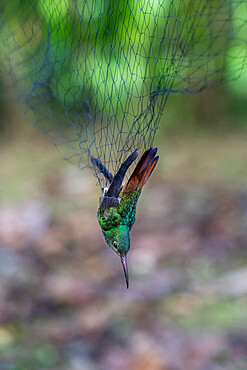
Rufous-tailed Hummingbird (Amazilia tzacatl) in a net set up by a researcher as part of a pollination study, rainforest at the "La Selva" research station in Puerto Viejo de Sarapiqui, Costa Rica
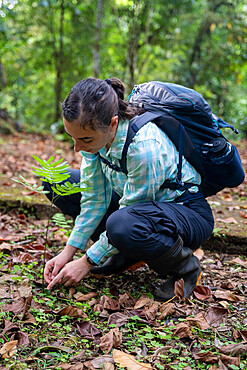
27-year-old researcher in front of the Pracaxi legume (Pentaclethra macroloba) at the "La Selva" research station in Puerto Viejo de Sarapiqui, Costa Rica
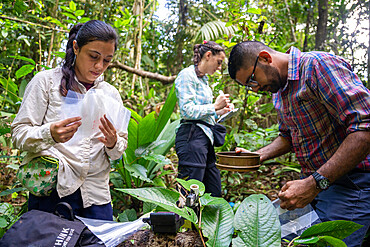
27-year-old researcher and her team working on nitrogen exchange between bacteria and the roots of legumes in the rainforest at the "La Selva" research station in Puerto Viejo de Sarapiqui, Costa Rica
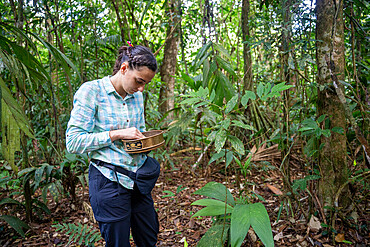
27-year-old researcher working on nitrogen exchange between bacteria and the roots of legumes in the rainforest at the "La Selva" research station in Puerto Viejo de Sarapiqui, Costa Rica
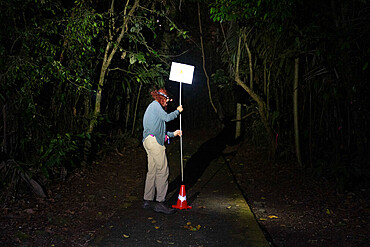
Installation of a sign on a hiking trail indicating the presence of nets to capture bats as part of a pollination study, rainforest of the "La Selva" research station in Puerto Viejo de Sarapiqui, Costa Ricardo
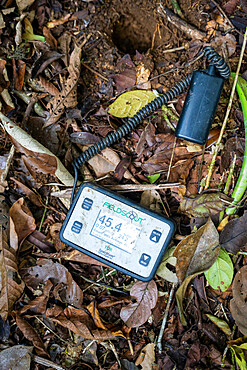
Instrument for measuring soil humidity at research station ?La Selva? in Puerto Viejo de Sarapiqui, Costa Rica
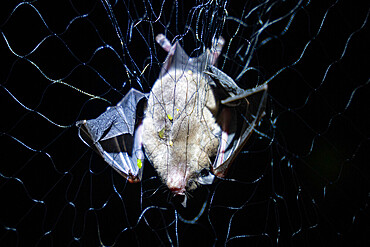
Bat caught in a net as part of a pollination study, rainforest at the "La Selva" research station in Puerto Viejo de Sarapiqui, Costa Rica
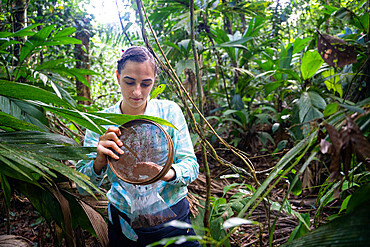
27-year-old researcher working on nitrogen exchange between bacteria and the roots of legumes in the rainforest at the "La Selva" research station in Puerto Viejo de Sarapiqui, Costa Rica
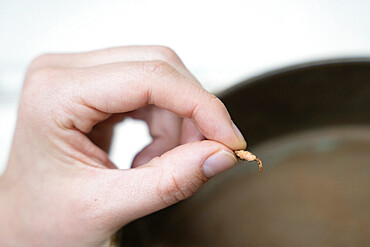
27-year-old female researcher working on nitrogen exchange between bacteria and the roots of legumes showing an example of a nodule of bacteria attached to the roots in the rainforest of the "La Selva" research station in Puerto Viejo de Sarapiqui, Costa Rica
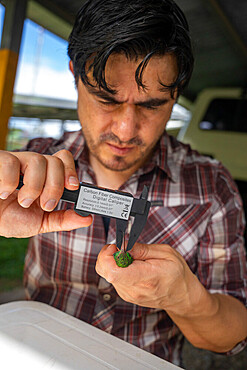
Researcher measuring the beak of a Rufous-tailed hummingbird as part of a pollination study, rainforest at the "La Selva" research station in Puerto Viejo de Sarapiqui, Costa Rica
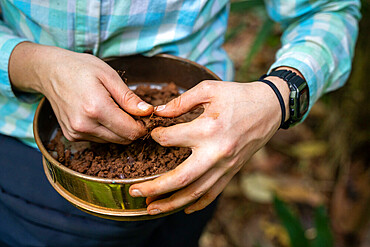
27-year-old researcher working on nitrogen exchange between bacteria and the roots of legumes in the rainforest at the "La Selva" research station in Puerto Viejo de Sarapiqui, Costa Rica
